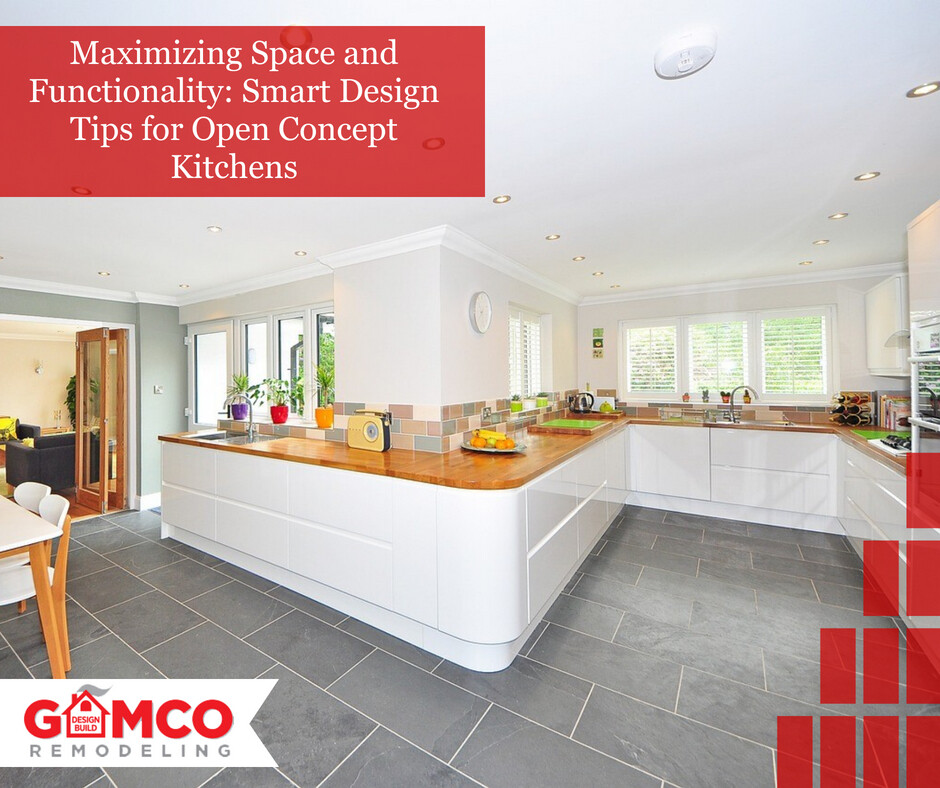
Open concept kitchens have become a staple in modern home design, offering a seamless flow between cooking, dining, and living areas. While the open layout promotes a sense of spaciousness and connectivity, it can also present challenges in terms of maximizing space and functionality. To help you make the most of your open concept kitchen, we’ve compiled a list of smart design tips that focus on space-saving open concept kitchen tips. Whether you’re remodeling or designing from scratch, these strategies will help you create a functional, stylish, and efficient kitchen.
Understanding the Open Concept Kitchen
An open concept kitchen integrates the kitchen area with adjacent living spaces, such as the dining and living rooms. This design promotes social interaction and can make smaller spaces feel larger. However, it also requires thoughtful planning to ensure that the kitchen remains functional and organized without sacrificing style.
Space-Saving Open Concept Kitchen Tips
Here are some practical tips to help you maximize space and functionality in your open concept kitchen:
1. Optimize Storage Solutions
Why It Matters: In an open concept kitchen, clutter can quickly disrupt the visual harmony of your space. Effective storage solutions help keep everything organized and within reach.
Tips:
- Use Vertical Space: Install cabinets that extend to the ceiling to maximize storage. Consider adding shelves above the cabinets for items you don’t use daily.
- Pull-Out Drawers and Cabinets: Incorporate pull-out drawers for pots and pans, as well as pull-out cabinets for pantry items. These solutions improve accessibility and minimize wasted space.
- Lazy Susans and Corner Carousels: Use these rotating shelves to make the most of corner cabinets and ensure every item is easy to access.
2. Incorporate Multi-Functional Furniture
Why It Matters: Multi-functional furniture can help you make the most of your kitchen space, especially when it serves dual purposes.
Tips:
- Island with Storage: Choose a kitchen island that includes built-in storage, such as drawers or cabinets, to keep kitchen essentials within easy reach.
- Extendable Tables: Use extendable or drop-leaf tables that can be adjusted based on your needs. These are perfect for small dining areas and can be tucked away when not in use.
- Bench Seating: Consider built-in bench seating around a dining table or breakfast nook. This can provide additional storage underneath and accommodate more guests.
3. Emphasize Efficient Layout Design
Why It Matters: An efficient layout ensures that your kitchen workflow is smooth and that you’re using your space effectively.
Tips:
- Work Triangle: Arrange your sink, stove, and refrigerator in a triangle formation to streamline food preparation and cooking.
- Zoning: Designate specific zones for cooking, prep, and cleanup to keep the space organized and functional. This separation helps in managing tasks efficiently and keeps the kitchen tidy.
- Clear Pathways: Ensure there are clear and wide pathways for movement. Avoid placing large appliances or cabinets in the way of walkways to maintain an open feel.
4. Use Space-Efficient Appliances
Why It Matters: Space-saving appliances can help you maximize your kitchen’s functionality without taking up excessive room.
Tips:
- Compact Appliances: Opt for compact or built-in appliances that save counter space and blend seamlessly with your cabinetry.
- Drawer Dishwashers: Consider drawer-style dishwashers if you have limited space. They are smaller than traditional models and can be installed in a variety of locations.
- Integrated Appliances: Choose appliances that integrate with your cabinetry for a streamlined look. Built-in refrigerators and ovens can help maintain the kitchen’s clean lines.
5. Choose Smart Lighting Solutions
Why It Matters: Proper lighting enhances both the functionality and aesthetics of an open concept kitchen.
Tips:
- Task Lighting: Install task lighting under cabinets to illuminate work surfaces and improve visibility during food preparation.
- Ambient Lighting: Use recessed ceiling lights or pendant lights to create a warm and inviting atmosphere. Ensure that the lighting is evenly distributed to avoid dark spots.
- Accent Lighting: Incorporate LED strip lights or other accent lighting to highlight architectural features or design elements.
6. Incorporate Clever Organizational Tools
Why It Matters: Organizational tools keep your kitchen tidy and help you use your space more effectively.
Tips:
- Drawer Organizers: Use dividers and organizers in drawers to keep utensils, cutlery, and tools neatly arranged.
- Hanging Storage: Install hanging racks or magnetic strips to store pots, pans, and knives. This keeps them accessible while freeing up cabinet space.
- Cabinet Organizers: Use pull-out racks, shelves, or bins inside cabinets to maximize storage and keep everything in its place.
7. Select Appropriate Materials and Finishes
Why It Matters: The choice of materials and finishes can affect both the functionality and the visual appeal of your kitchen.
Tips:
- Durable Countertops: Choose durable materials for countertops that can withstand heavy use and are easy to clean. Options like quartz, granite, or engineered stone are both practical and stylish.
- Easy-to-Clean Backsplashes: Opt for backsplashes that are easy to wipe down and maintain. Subway tiles, glass tiles, or stainless steel are great choices.
- Neutral Colors: Use neutral colors for cabinets and walls to create a cohesive and spacious look. Add pops of color through accessories or decorative elements.
8. Consider Open Shelving
Why It Matters: Open shelving can add both functionality and visual interest to an open concept kitchen.
Tips:
- Display Attractive Items: Use open shelves to display attractive dishware, glassware, or cookbooks. This can make your kitchen feel more personalized and less cluttered.
- Mix with Cabinets: Combine open shelves with closed cabinets to balance functionality and aesthetics. This allows for easy access to frequently used items while keeping other things out of sight.
Conclusion
Designing an open concept kitchen requires careful planning and attention to detail. By implementing these space-saving open concept kitchen tips, you can enhance both the functionality and style of your kitchen, making it a central and enjoyable part of your home. From optimizing storage solutions to choosing smart appliances and incorporating multi-functional furniture, each of these strategies will help you create a space that is not only beautiful but also practical and efficient.
Whether you’re starting a new kitchen design or renovating an existing space, these tips will guide you toward a more organized and visually appealing open concept kitchen. Embrace these ideas, and transform your kitchen into a space that truly meets your needs while complementing the open layout of your home.
GAMCO Remodeling: This family owned and operated company is headed up by father-and-son-team Robert and Gordon Millard. The two Certified Remodelers bring a combined experience of more than eighty years to every project. Follow Us now for more home remodeling tips or contact us at (631) 587-2266
